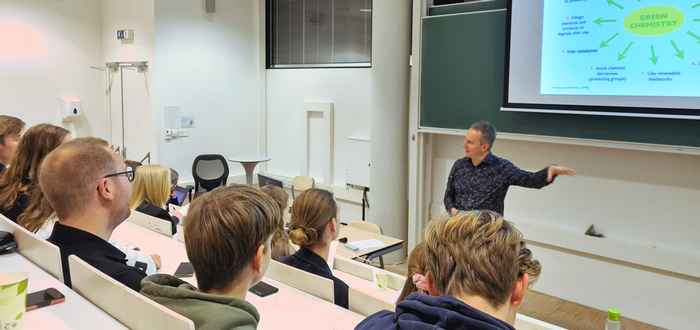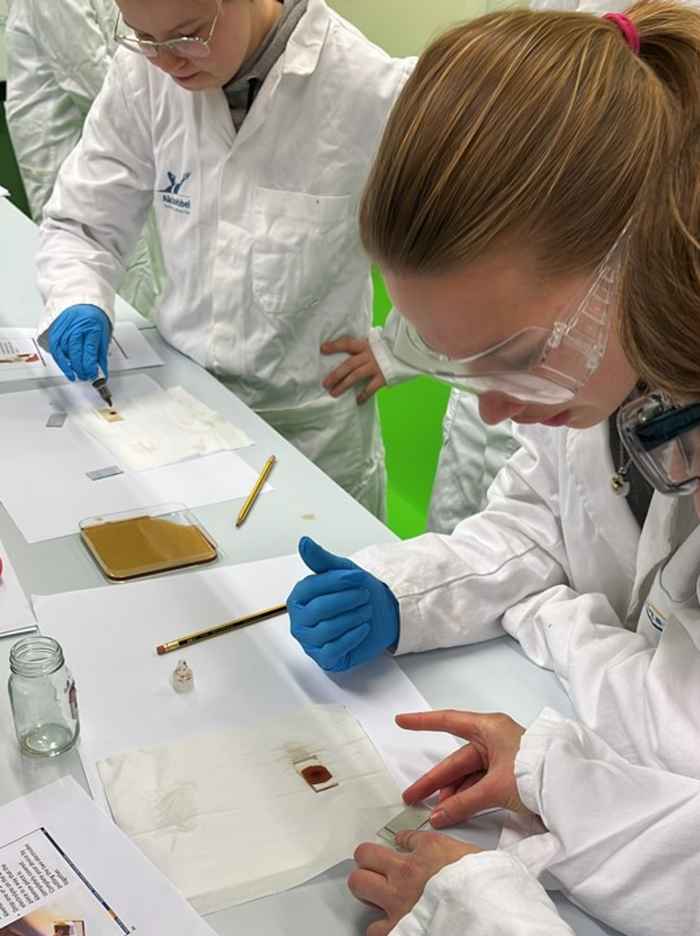Engaging ‘Chemie in Amsterdam’ programme inspires high school students
1 December 2022

The ‘Chemie in Amsterdam’ event is organized annually, in turn by Amsterdam chemists from UvA/HIMS and from VU University. This year's theme was Smart Chemistry, featuring lectures and workshops by Jocelyne Vreede, Chris Slootweg, Saer Samanipour, David Dubbeldam, Joost Reek, Sonja Pullen and Joen Hermans. The programme provided inspiration as well as food for thought and led to many interesting discussions and interactions.
As an example, the presentation of Chris Slootweg about Circular Chemistry really struck a chord with the audience. He presented a chemical perspective to the concept of planetary boundaries and argued that the world, including chemists, need to radically change their way of thinking - from linear to circular. He provided examples regarding production of carbon neutral fuels and polymers, hydrogen storage, and phosphorous recovery, underpinning his viewpoint that life cycle thinking will reinvent chemistry. It led to lively discussions, for instance on the productions and use of batteries for electric vehicles.

Another presentation was by Saer Samanipour of Analytical Chemistry, who impressed the visitors with a clear presentation on analytical methods such as chromatography and mass spectrometry. He showed nice animations explaining these methods and discussed the relevance of data processing in fields as diverse as paintings research, biological analysis and forensic drug detection.
Hands-on workshops
A more hands-on approach was provided in three workshops on Computational Chemistry (David Dubbeldam, Jocelyne Vreede), Solar Cells (Joost Reek), and the Chemistry of Oil Paintings (Joen Hermans). As an example, in the Computational Chemistry workshop David Dubbeldam presented the problem of separating isomers of xylene. Since these differ little in boiling point, distillation is not a practical method. Nanoporous materials offer a solution here, since these can be designed so that the material accommodates one xylene isomer better than the others. Computers can be used to determine optimal parameters, and that is exactly what the participants went to work at. They applied dedicated computer software to arrive at an optimal separation procedure.
The programme ended with drinks where it was possible to discuss the day. Teachers and students spoke of an interesting and inspiring afternoon, and found it fun and educational to experience the ins and outs of chemistry at the university.
See also
Website Bètapartners (network of UvA, VU University and more than 45 schools aimed at creating inspiring science education).